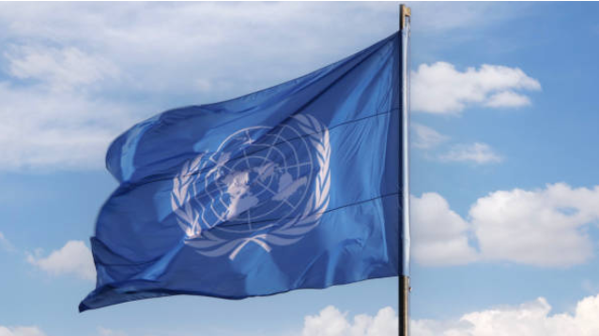Challenges and Expectations of the SDGs from the Perspective of Historical Genealogy

Since the Sustainable Development Goals (SDGs) were agreed upon in September 2015The international situation has changed drastically, and discussions have been held at the United Nations over the progress of the SDGs. Ahead of the deadline of 2030, we have had the opportunity to participate in discussions at the United Nations, but the situation on the ground is not in sync, and we are often reminded of the words of Antonio Gramsci, an Italian thinker.
(Antonio Gramsci, who proposed the idea of hegemony)

(Reference: Wikipedia)
‘The crisis consists precisely in the fact that the old is dying and the new cannot be born; in this interregnum a great variety of morbid symptoms appear.’.
While the progress of the SDGs is lagging far behind, considering that there is insufficient discussion on solutions by 2030 and beyond the SDGs, it can be said that the above words represent the present day. Critical points have been made from various perspectives, including criticism that the SDGs framework itself is a tool for hegemonic countries. In this paper, we will take up the criticism of the SDGs based on the theory of the world system from a more macro perspective, and discuss the challenges for the global agenda.
First, I would like to briefly trace the historical genealogy of whether the SDGs framework is for the benefit of the hegemon. In the first place, the SDGs themselves are the successor to their predecessor, the Millennium Development Goals (MDGs). During the Cold War, the United States and the Soviet Union took the lead, and during the Cold War, infrastructure assistance to developing countries under the banner of “modernization” was actively developed. Many of these infrastructure aids, regardless of the governance system of developing countries, have resulted in the strengthening of authoritarian governments, which is inconsistent with the supposedly democratic modernization policies aimed at by original development aid. These developments support Huntington’s theory that the process of modernization is unstable and violent, and that authoritarian governance is necessary to implement the necessary policies.
With the collapse of the Soviet Union, Western countries no longer have the incentive to invest large sums of money to support authoritarian regimes in developing countries. In addition, neo-Marxism developed the subordination theory, which states that underdevelopment stems from a global structure of domination and exploitation in the international political economy, leading to Galtung’s theory of “structural violence.” It was around this time that the political and economic asymmetry between the “center and the periphery” and the resulting domination, exploitation, and inequality began to be problematized, and the mainstream of development from the 1990s onwards began to be established. The United Nations Development Programme’s (UNDP) Human Development Report (UNDP 1990) led to the concept of “human security.”
Considering the genealogy so far, as the theory of world systems argues, the history of how the intervening structure of the world created the hegemonic state and the development and other activities under this structure may be as described in the criticism at the beginning of this article. On the other hand, in 2000, peacebuilding was looking for new avenues, while development aid had already changed direction and begun to make substantial progress. In other words, we will enter the process of formulating the MDGs and then transitioning to the SDGs.
(SDGs adopted by the United Nations General Assembly)

(Reference: Asahi Digital)
Based on the idea that “peace is threatened without development,” the MDGs focus on social development issues and set specific numerical targets for the governments of developed countries to achieve the development of developing countries. Subsequently, the SDGs (Sustainable Development Goals), which were formulated as successors, emphasized environmental goals in addition to social development goals, and it was argued that they were universal goals that included developed countries. In the SDGs, “human security” remains the same, but the means are diversified, and the element of “structural reform” is becoming stronger.
Considering the transition from the MDGs to the SDGs mentioned above, it is not an extension of the policies of the hegemonic state, but rather an approach to the challenges of humanity as a whole, encompassing the North and the South. However, it is also true that another problem has arisen as the deadline of the SDGs of 2030 approaches. In the era of so-called multipolarity, there is no entity to lead the policies of the hegemons of the time.
“The earth is one, but the world is not.”
As the Brundtland Report of 1987 noted, how can we unite the world at a time when the world economy and politics are more fragmented than ever, the balance of power is changing rapidly, and the norms of the international order are being disputed? I believe that the answer to that question will lead to the next discussion on the SDGs.
In particular, I believe that it is necessary to reconsider the theory of world systems by replacing it with the current situation. In other words, in the present day, the key for Japan will be to create a structure that involves the countries around us in tackling the global agenda through “science” rather than military power. In this sense, the world system theory built for the hegemon is a framework that needs to be reconsidered now, and the key is whether it can provide role models within that framework.
Our research organization’s “Pax Japonica” refers to the process of transferring the solution of the “Grand Challenge” to the entire global society, which is one of the four elements for realization. In order to achieve this, we will continue to participate in UN discussions under our mission as a UN NGO and lead the new framework.
Corporate Planning Group Shugo Iwasaki
[Bibliography]
Abhishek Behl, Rahul Sindhwani. Guest editorial: Work, progress, and global responsibility in the implementation process of UN SDGs. Journal of Global Responsibility (2024)
Moghadam, Valentine M. “Revolutions and the World-System.” (2024): 08969205241238399.
Brelage, Tristan, et al. “Missing Perspectives on Class in Sustainable Development Goals: A Comprehensive Review.” 2024.
Ofori, George. “From the MDGs to the SDGs: The role of construction.” The Elgar Companion to the Built Environment and the Sustainable Development Goals. Edward Elgar Publishing, 2024. 20-43.
Hiwaki, Kensei. “Sustainable Development with Steadily Maturing Humanity: A Guideline for the Prospective Global Community.” 2024



